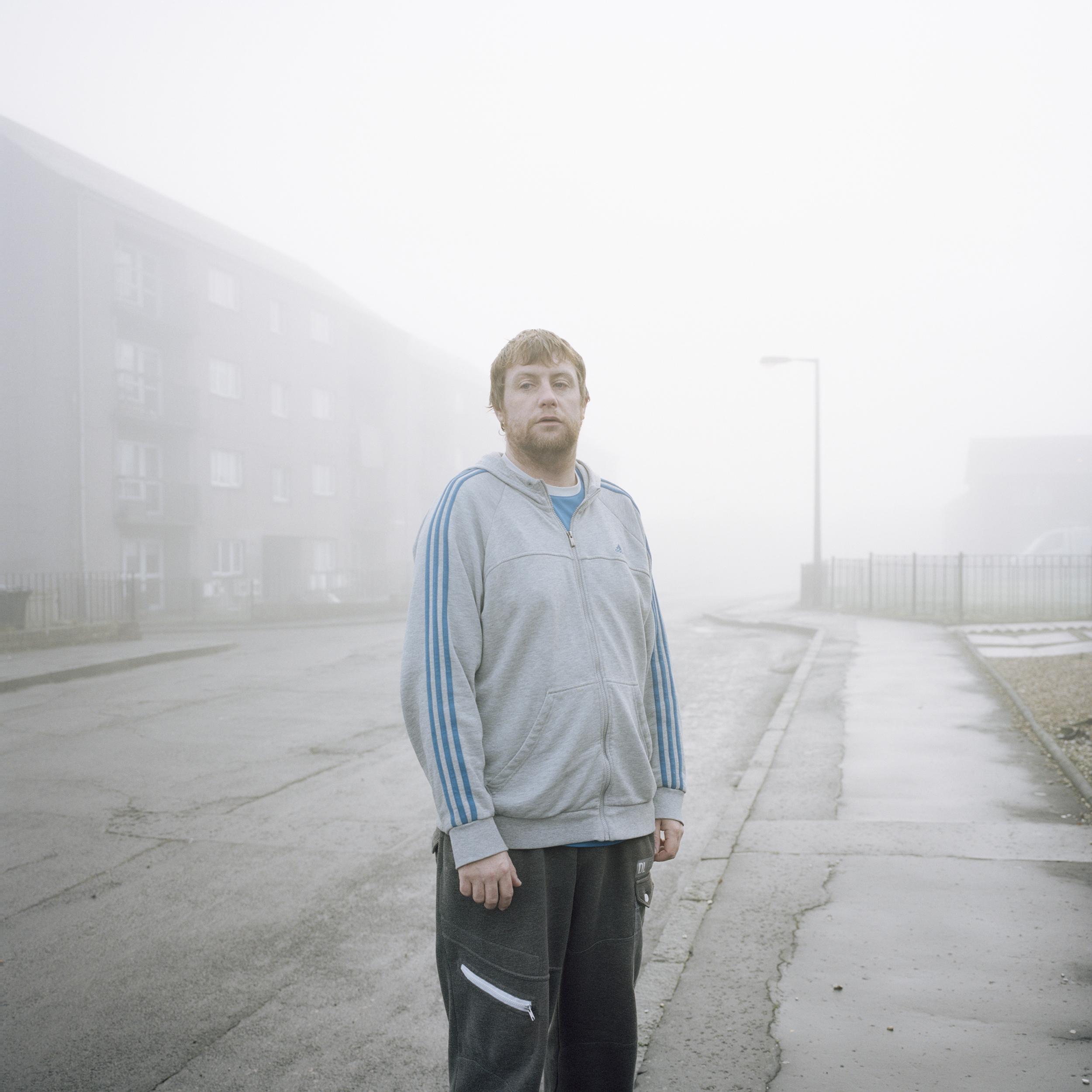Steven, from the series In the Place © Margaret Mitchell
The Scottish photographer reflects on returning to a project she started in 1994 – photographing her sister and her children in impoverished Stirling
In 1994, Scottish photographer Margaret Mitchell began working on a project about her sister Andrea and her children, Steven, Kellie and Chick. Family offers a glimpse into their home in The Raploch, Stirling, as they navigated difficult socioeconomic circumstances. More than 20 years later, following Andrea’s death, Mitchell decided to update the family story. She documented the three children, all living separate lives as adults, for a project titled In This Place. In over two decades, the children had not moved far – in either location or status. Published in 2021, Passage presents both bodies of work, raising questions about class and opportunity in the UK, and whether our choices are preordained.
“I wanted to re-evaluate the issues of inequality and stigma, and started with a series of questions: Why had the children’s lives turned out as they had?”
What made you want to update the family story, 20 years later?
The political landscape in the early 90s formed the background to Family, a time when single mothers – especially those with several children, living on council estates, like my sister – were vilified by Conservative [Party] politicians. In 1994, I was pulled in by the politics of my sister’s situation, but the work became a deeply personal story about the children.
Over 20 years later, I felt a personal pull that became deeply political. I wanted to re-evaluate the issues of inequality and stigma, and started with a series of questions: Why had the children’s lives turned out as they had? What were the choices, or lack thereof, that had followed them from childhood to adulthood? Are our lives ultimately predetermined by whether we are born into disadvantage or privilege? I wanted to question inequality within the UK, asking where its source lay. It is a body of work that is close to me, but repeated in countless households and cultures.
Steven, Kellie and Chick are dealing with many of the same challenges as their mother, but what new issues do they face?
Even though there is pride, love and resilience, there is also less stability, less opportunity and less family structure. At the time of updating the work, the children all lived in run-down flats in areas where opportunity lessens simply because of the street you live on. Adversity often accumulates – it isn’t just one thing, but a whole host of disadvantages. If we are disempowered as children, if we feel a lack of the ability to choose a path in life, if we lack money, lack support, live in environments that do not offer good opportunities.
“Family is, at heart, a story about childhood. Most of it is shot in the home because that is where their lives played out”
Family was shot almost entirely in the home, whereas In This Place situates us in the surrounding landscape. Why is this?
Family is, at heart, a story about childhood. Most of it is shot in the home because that is where their lives played out. The area is known for its social and economic deprivation, and I knew that as soon as I stepped outside, the reputation of the place would overshadow the content in the images. When I updated the work, the family had moved to the other side of town, to a new but similar place. The external environment became significant because of what had not changed. The cover of [Passage] shows a real but essentially symbolic bus route that ties the two places together. It is the ‘journey’ the 1994 children took from their childhood home to the new area: two places linked by an actual bus route, but also in their social deprivation statistics.
Why is this image of Steven (above) particularly poignant?
When I take photographs, I often go for a walk and chat. Steven told me he knew a nice place that was ‘just up the road’. We arrived at an empty plot of land, where his mum’s flat had been; Steven had lived there with her before she became terminally ill. The block had been demolished supposedly for regeneration, which had not happened. We kept walking for a couple of minutes, then stopped. On one side was the block of flats where he was staying in temporary accommodation, and on the other side was where his sister lived. It felt as if his whole life was suffused with this sense of loss, of accepting a fate one didn’t want. Then I took this photo.

